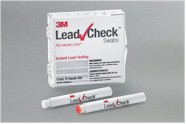 Get The Facts
Get The Facts
- Many homes built before 1978 have lead-based paint. Lead from paint, paint chips, and dust can pose serious health hazards, particularly to children and pregnant women. Lead in the blood can impact brain function and development.
- Adults and children can get lead into their bodies by breathing in lead dust (especially during activities such as renovations, repair, or painting), or by swallowing lead dust that settles in food, on food prep surfaces, floors, window sills, and other places, or by eating paint chips or soil that contains lead.
- The most common sources of lead in drinking water are lead pipes, faucets, and fixtures. Other sources of lead include some metal toys or toys painted with lead-based paint, furniture with lead-based paint, some metal-containing jewelry, and lead-glazed pottery or porcelain.
 Get Your Home Tested
Get Your Home Tested
If your home was built before 1978, you can get it tested for lead-based paint in the following ways:
- A lead-based paint inspection tells you if your home has lead-based paint and where it's located.
- A lead risk assessment tells you if your home currently has any lead hazards from paint, dust, or soil, and where they are located.
- A combination inspection and risk assessment tell you if your home has any lead-based paint or lead-based paint hazards and where they are located.
Contact our lead specialist at 812-738-3237, Option 2, if you have questions or concerns about lead.
 Get Your Child Tested
Get Your Child Tested
Elevated blood lead levels can seriously harm a child's brain development. Act early to get your child tested for lead.
- Children's blood lead levels tend to increase from 6 to 12 months of age and tend to peak at 18 to 24 months of age.
- A simple blood test can detect lead. Consult your healthcare provider for advice on blood lead testing.
- Blood lead tests are usually recommended for:
- Children at ages 12 and 24 months (and required at these ages for children who receive Medicaid);
- Children or other family members who have been exposed to high levels of lead; and
- Children who should be tested under your state or local health screening plan.
